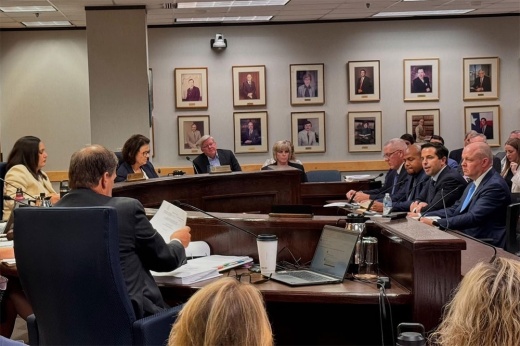The big picture
The hearing was held as Texas policymakers continue investigations into how various utility companies performed in the wake of Hurricane Beryl—a Category 1 hurricane that landed in the Greater Houston area on July 8. At the July 25 hearing, officials discussed details and deadlines as early as Aug. 1.
What you should know
After CenterPoint CEO Jason Wells told commissioners he took accountability for where the company fell short and apologized to customers, he also pointed to where he's going to pick up after communication efforts fell short of customer expectations.
"I commit that, starting immediately, we will improve our communications with our customers, and we'll take specific actions to build the most resilient coastal grid in the country," Wells said.
CenterPoint's plan of action focuses on the following three tiers of priorities:
- Resiliency investments that use predictive modeling, including leveraging artificial intelligence, to assist and strategically deploy crews for work assignments and staging site selections; targeting more line miles with higher-risk vegetation; hardening nearly 350 distribution line miles to the latest extreme wind standards of 110 mph
- Strengthened partnerships, including increasing backup emergency generation units and engaging with local emergency management offices for response capabilities for critical facilities and infrastructure
- Customer communications, including launching a new cloud-based outage tracker on Aug. 1, and incorporating daily press briefings, press releases, public advertising and social media to effectively inform customers during major storms
Gardner also addressed how customers experienced delays receiving their power or service restoration updates during Beryl. In order to provide restoration guidance to customers, he said the company is committed to communicating daily, especially when customers don't have power.
CenterPoint only has contact information for 42% of its customers, Gardner said, and not every customer is receiving power alert services. Commissioners expressed concerns with the 42% figure during the meeting.
"The fact that you all don't have contact with all of the customers. ... You all have equipment on their premises, so they are your customers, and if you don't have the information to your customers, then that's your fault," Commissioner Jimmy Glotfelty said.
The impact
Around half a million CenterPoint customers remained without power at least five days after Beryl landed. At least 18 deaths in Harris County have been attributed to Beryl, according to July 24 numbers from the Harris County Institute of Forensic Sciences. Half of the fatalities were caused by cases of hyperthermia—when the body overheats.





